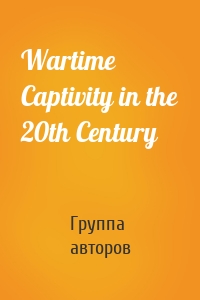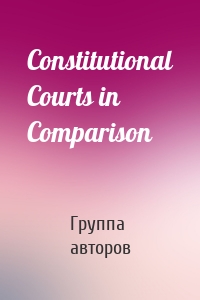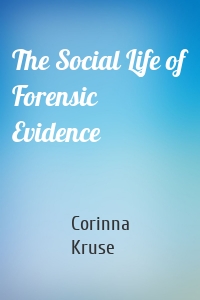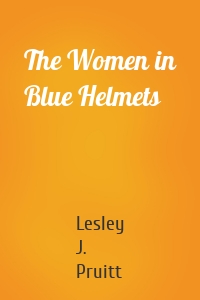Юриспруденция, право
7421 кн.
Wartime Captivity in the 20th Centu...
Long a topic of historical interest, wartime captivity has over the past decade taken on new urgency as an object of study. Transnational by its very nature, captivity’s historical significance extends far beyond the front lines, ultimately inextricable from the histories of mobilization, nationalism, colonialism, law, and a host of other related subjects. This wide-ranging volume brings together an international selection of scholars to trace the contours of this evolving research agenda,...
| Автор | Группа авторов |
Archaeologies of Rules and Regulati...
How can we study the impact of rules on the lives of past people using archaeological evidence? To answer this question, Archaeologies of Rules and Regulation presents case studies drawn from across Europe and the United States. Covering areas as diverse as the use of space in a nineteenth-century U.S. Army camp, the deposition of waste in medieval towns, the experiences of Swedish migrants to North America, the relationship between people and animals in Anglo-Saxon England, these case studies...
| Автор | Группа авторов |
Constitutional Courts in Comparison
Constitutional litigation in general attracts two distinct types of conflict: disputes of a highly politicized or culturally controversial nature and requests from citizens claiming a violation of a fundamental constitutional right. The side-by-side comparison between the U.S. Supreme Court and the German Federal Constitutional Court provides a novel socio-legal approach in studying constitutional litigation, focusing on conditions of mobilisation, decision-making and implementation. This...
| Автор | Группа авторов |
The Limits of Westernization
In a 2001 poll, Turks ranked the United States highest when asked: «Which country is Turkey's best friend in international relations?» When the pollsters reversed the question—"Which country is Turkey's number one enemy in international relations?"—the United States came in second. How did Turkey's citizens come to hold such opposing views simultaneously? In The Limits of Westernization , Perin E. Gürel explains this unique split and its echoes in contemporary U.S.-Turkey...
| Автор | Perin E. Gürel |
States of Delinquency
This unique analysis of the rise of the juvenile justice system from the nineteenth to twentieth centuries uses one of the harshest states—California—as a case study for examining racism in the treatment of incarcerated young people of color. Using rich new untapped archives, <i>States of Delinquency</i> is the first book to explore the experiences of young Mexican Americans, African Americans, and ethnic Euro-Americans in California correctional facilities including Whittier State...
| Автор | Miroslava Chavez-Garcia |
Hidden Truth
Hidden Truth takes the reader inside a Rhode Island juvenile prison to explore broader questions of how poor, disenfranchised young men come to terms with masculinity and identity. Adam D. Reich, who worked with inmates to produce a newspaper, writes vividly and memorably about the young men he came to know, and in the process extends theories of masculinity, crime, and social reproduction into a provocative new paradigm. Reich suggests that young men's participation in crime constitutes a...
| Автор | Adam Reich |
Violette Noziere
On an August evening in 1933, in a quiet, working-class neighborhood in Paris, eighteen-year-old Violette Nozière gave her mother and father glasses of barbiturate-laced «medication,» which she told them had been prescribed by the family doctor; one of her parents died, the other barely survived. Almost immediately Violette’s act of «double parricide» became the most sensational private crime of the French interwar era—discussed and debated so passionately that it was compared to the Dreyfus...
| Автор | Sarah Maza |
The Social Life of Forensic Evidenc...
In <I>The Social Life of Forensic Evidence</I>, Corinna Kruse provides a major contribution to understanding forensic evidence and its role in the criminal justice system. Arguing that forensic evidence can be understood as a form of knowledge, she reveals that each piece of evidence has a social life and biography. Kruse shows how the crime scene examination is as crucial to the creation of forensic evidence as laboratory analyses, the plaintiff, witness, and suspect statements...
| Автор | Corinna Kruse |
The Prison School
Public schools across the nation have turned to the criminal justice system as a gold standard of discipline. As public schools and offices of justice have become collaborators in punishment, rates of African American suspension and expulsion have soared, dropout rates have accelerated, and prison populations have exploded. Nowhere, perhaps, has the War on Crime been more influential in broadening racialized academic and socioeconomic disparity than in New Orleans, Louisiana, where in 2002 the...
| Автор | Lizbet Simmons |
Control and Protect
Control and Protect explores the meaning and significance of efforts designed to combat sex trafficking in the United States. A striking case study of the new ways in which law enforcement agents, social service providers, and nongovernmental advocates have joined forces in this campaign, this book reveals how these collaborations consolidate state power and carceral control. This book examines how partnerships forged in the name of fighting domestic sex trafficking have blurred the boundaries...
| Автор | Jennifer Musto |
The Women in Blue Helmets
The Women in Blue Helmets tells the story of the first all-female police unit deployed by India to the UN peacekeeping mission in Liberia in January 2007. Lesley J. Pruitt investigates how the unit was originated, developed, and implemented, offering an important historical record of this unique initiative. Examining precedents in policing in the troop-contributing country and recent developments in policing in the host country, the book offers contextually rich examination of...
| Автор | Lesley J. Pruitt |
In Search of Safety
In Search of Safety takes a close look at the sources of gendered violence and conflict in women’s prisons. The authors examine how intersectional inequalities and cumulative disadvantages are at the root of prison conflict and violence and mirror the women’s pathways to prison. Women must negotiate these inequities by developing forms of prison capital—social, human, cultural, emotional, and economic—to ensure their safety while inside. The authors also...
| Автор | Barbara Owen |
Hurt
Hurt: Chronicles of the Drug War Generation weaves engaging first-person accounts of the lives of baby boomer drug users, including author Miriam Boeri’s first-hand knowledge as the sister of a heroin addict. The compelling stories are set in historical context, from the cultural influence of sex, drugs, and rock 'n' roll to contemporary discourse that pegs drug addiction as a disease punishable by incarceration. With penetrating insight and conscientious...
| Автор | Miriam Boeri |

























